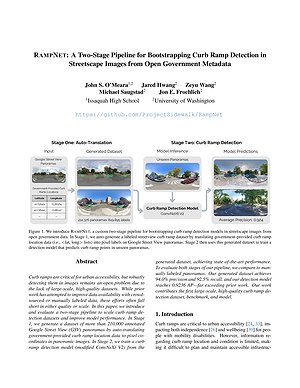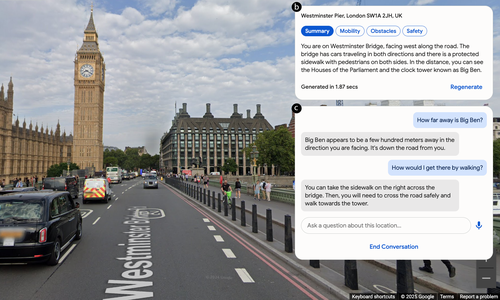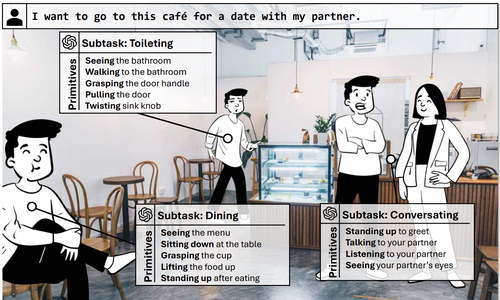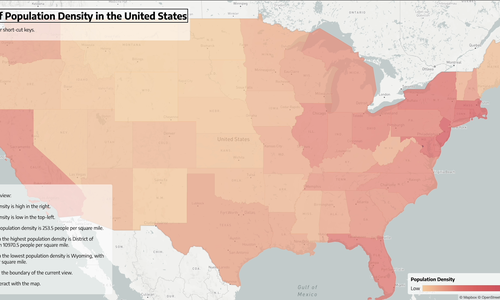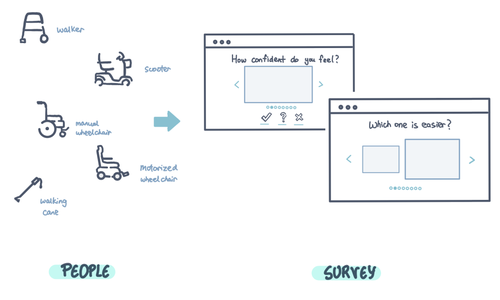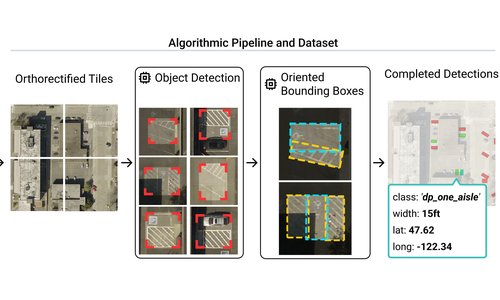RampNet
Project Description
Curb ramps are critical for urban accessibility, but robustly detecting them in images remains an open problem due to the lack of large-scale, high-quality datasets. While prior work has attempted to improve data availability with crowdsourced or manually labeled data, these efforts often fall short in either quality or scale. In this paper, we introduce and evaluate a two-stage pipeline called RampNet to scale curb ramp detection datasets and improve model performance. In Stage 1, we generate a dataset of more than 210,000 annotated Google Street View (GSV) panoramas by auto-translating government-provided curb ramp location data to pixel coordinates in panoramic images. In Stage 2, we train a curb ramp detection model (modified ConvNeXt V2) from the generated dataset, achieving state-of-the-art performance. To evaluate both stages of our pipeline, we compare to manually labeled panoramas. Our generated dataset achieves 94.0% precision and 92.5% recall, and our detection model reaches 0.9236 AP—far exceeding prior work. Our work contributes the first large-scale, high-quality curb ramp detection dataset, benchmark, and model.
Publications
Talks
RampNet: A Two-Stage Pipeline for Bootstrapping Curb Ramp Detection in Streetscape Images from Open Government Metadata
Oct 20, 2025 | ICCV CV4A11y Workshop
Honolulu, Hawaiʻi
John O'Meara, Jared Hwang, Zeyu Wang, Mikey Saugstad, Jon E. Froehlich
